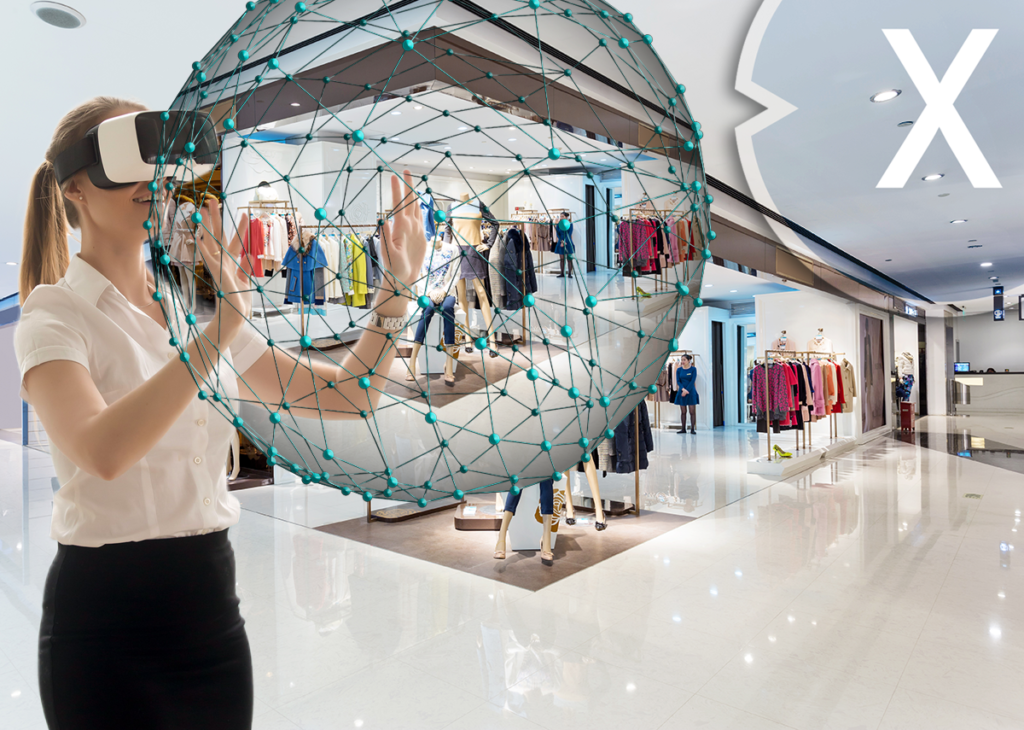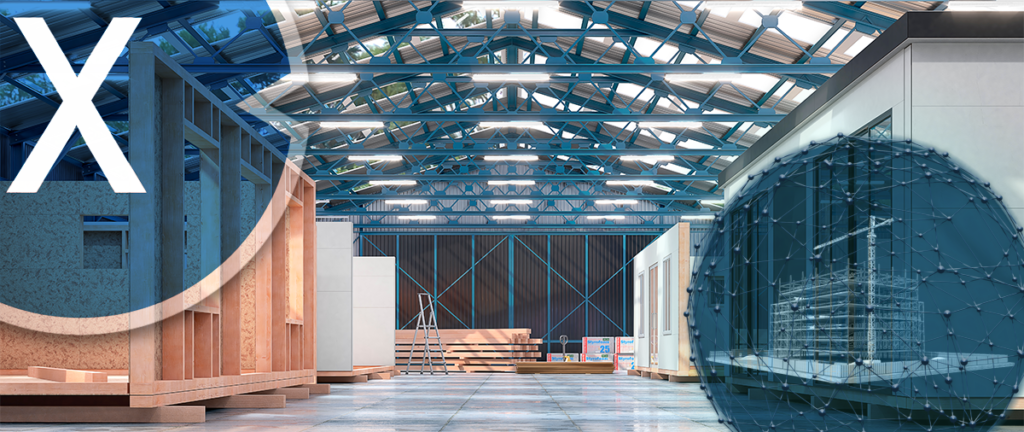The “3K bloodsucker”: the triple burden that companies can force to their knees-master challenges with solutions
Language selection 📢
Published on: October 7, 2023 / Update from: October 7, 2023 - Author: Konrad Wolfenstein
🏢 The '3K bloodsuckers': The triple burden that can bring companies to their knees
There are three fundamental cost factors in the business world that make life difficult for many companies: personnel costs, real estate costs and energy costs. Together, these three “KS” can be described as the “3K bloodsucker” of the company. They not only suck valuable resources, but also create a constant challenge for management. In an increasingly globalized and competitive world, these costs are no longer just a burden, but often also an obstacle to growth and innovation.
👥 Personnel costs and staff shortages
Personnel costs are a significant cost factor for many companies and go far beyond the pure salary payments. They include a wide range of expenses, including wages, social benefits, training and further education as well as recruitment costs. In addition, the “soft” costs such as motivation, corporate culture and job satisfaction are not to be neglected. A demotivated team can significantly impair productivity.
The lack of staff only exacerbates this problem. In many industries, especially IT, healthcare and engineering, the lack of qualified specialists is a real problem. This shortage drives up salaries and makes it more difficult to recruit qualified personnel.
Competition for talent is fierce, and companies often need to offer high salaries and attractive benefits packages to attract the best candidates. This defect not only affects costs, but can also affect the quality of the services or products offered. Companies are therefore faced with the challenge of not only finding qualified personnel, but also retaining and developing them in the long term.
A double challenge
Personnel costs are the largest expense for many companies and often take up a significant portion of the budget. These costs include not only basic salaries, but also additional benefits such as pension insurance, health insurance, further training, bonuses and employee stock options. There are also recruiting costs, which can range from placing job advertisements to recruiting agency fees.
The combination of personnel costs and a simultaneous staff shortage actually has an impact on the quality of the service. Finding good and qualified staff is one thing, getting them comes at a price. They can even pose a threat to the existence of companies if their qualifications are no longer sufficient to face competition.
🏢 Real estate costs
In addition to personnel costs, real estate costs play a crucial role. This applies to rents for office space as well as for warehouse space, production facilities and even retail space. In cities with high costs of living, these rents can reach astronomical levels. There are also the costs of maintenance, depreciation, insurance and, in some cases, the costs of conversion or renovation. As real estate prices continue to rise in many major cities, it is becoming increasingly difficult for companies to find suitable locations at affordable prices.
The choice of location is therefore a strategic decision that goes far beyond the pure space costs. While a convenient location can minimize costs, if it's far from customers, suppliers or even employees, transportation costs could wipe out any savings.
💡 Energy costs
The third category is energy costs, which also cannot be underestimated in the modern business world. Electricity, gas, water and other energy sources are essential for the operation of every company. Especially for manufacturing companies that operate energy-intensive machines and systems, energy costs can make up a significant portion of the overall budget. The constant increase in energy prices and the obligation to switch to sustainable energy present additional challenges.
🎯 Inescapable reality
The 3K triple burden of personnel costs, real estate costs and energy costs - are an unavoidable reality for every company. However, they also represent an opportunity for innovation and optimization. Through strategic thinking and a willingness to adapt, companies can not only overcome these challenges but even turn them into competitive advantages. Those who are able to efficiently manage these fundamental cost factors are better equipped to succeed in the modern business world.
📣 Similar topics
- 3️⃣ The “3K” bloodsucker: a navigation guide for companies
- 👥 Personnel costs: More than just salaries
- 🏢 Real estate costs: The hidden trap for companies
- 💡 Energy costs: The invisible enemy on the balance sheet
- 🌍 Globalization and the “3K” challenges
- 📈 growth vs. “3k”: a balancing act
- 🏠 Home office as a solution for high real estate and personnel costs
- 💼 Modern talent management to combat the shortage of skilled workers
- ♻️ Sustainable energies as a strategy against rising costs
- 🎯 Strategic solutions for the “3K” challenges
#️⃣ Hashtags: #3KBloodsucker #Personnel Costs #Real Estate Costs #Energy Costs #StrategicSolutions
📈 Strategic solution approaches in human resources management
In today's business world, human resources management is much more than just a cost-saving method. It plays a central role in ensuring a company's competitiveness in a rapidly changing market. Especially in view of digitalization, which offers a wealth of new challenges but also opportunities, human resources management must be flexible and innovative.
💻 Digitalization and employee training
The digital transformation has fundamentally changed business operations. The continuous introduction of new technologies, combined with constant market changes, requires constant and increased further training of employees. It is no longer just about updating existing skills, but also about adapting to “inflationary revolutionary” innovations. This presents personnel management with the challenge of developing training programs that are both current and future -oriented.
🌍 Another point: language challenges
In Germany and many other countries, linguistic diversity has increased. This development brings with it challenges, such as misunderstandings due to insufficient language skills. Effective human resources management must therefore be able to overcome cultural and language barriers to create a productive work environment. Training programs must be designed to be accessible to a wide range of employees.
🕶️ Use of XR technologies and Metaverse
Extended Reality (XR), a collection of technologies that include virtual and augmented reality, offers unique opportunities for employee training and development. By using XR technologies, realistic scenarios can be created for training and simulations.
In addition, the concept of the Metaverse, which virtually expands and physically connects different forms of reality, is gaining importance. In the Industrial, Business or Customer Metaverse, employees can not only be trained, but also tested in real business situations. The consumer metaverse can also be used to make the customer journey more efficient. It offers opportunities to use advisory staff more effectively and speed up the sales process.
Suitable for:
🛒 Hybrid consumer metaverse and retail innovation
An interesting future project could be the Hybrid Consumer Metaverse, which combines 3D visualization and 2D matrix code integration (planned from 2027). In retail stores or discount stores, for example, this technology could be used to navigate customers through the store in multiple languages (!) and offer personalized recommendations in real time. This innovation could significantly simplify and speed up the purchasing process and reduce personnel requirements and effort.
Suitable for:
📝 Challenges and complex tasks
Human resources management is faced with a complex task in view of digitalization and the resulting challenges. From employee development to overcoming language barriers to the effective use of new technologies such as XR and Metaverse, a holistic approach must be taken. This is the only way companies can survive in an increasingly competitive market environment. The strategic solution approaches must always be in the context of the company's goals and values in order to ensure sustainable development. Successful human resources management is therefore no longer just a supporting function, but a decisive factor for the company's success.
🗒️ If you don't understand something or need advice, we also offer training and workshops

Metaverse & Extended Reality training, lecture or workshop for augmented, mixed and virtual reality – Xpert.Digital
In today's digital era, technology is evolving at a rapid pace. There are constantly new terms and technologies that need to be understood and mastered. If you're having trouble keeping up with topics like Metaverse, XR technologies, or immersive 3D, you're not alone.
More about it here:
🏢 Strategic solutions and optimization of real estate costs in companies
🔢 Real estate costs: A complex network of variable and fixed factors
Expenses for real estate are not only a central, but often a very complex cost item for companies. In fact, real estate costs are the second major cost factor, right after personnel costs. In major cities or economically dynamic areas, commercial real estate prices can rise astronomically. The complexity of the cost structure goes far beyond just rent or the purchase price and extends to additional costs, maintenance, insurance and even renovations.
There are also other items such as the costs for security services, building cleaning and the ongoing maintenance of the technical infrastructure, from the air conditioning to the elevator. In addition, tax aspects and, if necessary, loss of value of the property must be taken into account.
📍 Strategic importance of the choice of location
Given this complex cost structure, the choice of location for a company is a strategic decision of immense importance that goes far beyond the consideration of pure space costs. While a location in a less desirable area may be more cost-effective, the company's entire ecosystem must also be taken into account. Distances to customers, suppliers and even the workforce play a crucial role. Transport costs, travel times and logistics costs can quickly become a significant cost factor and completely eat up any savings on rent.
🌐💡 Innovative approaches: Micro-Hubs and V-Commerce
An innovative way to overcome both real estate costs and logistical challenges is to build a micro-hub network in combination with V-Commerce (Consumer Metaverse). A micro-hub is a small, locally located logistics point that facilitates last-mile distribution. The decentralized distribution of these hubs means that transport routes can be shortened and costs can therefore be saved.
V-commerce, i.e. trading in the virtual metaverse, offers the possibility of partially or completely replacing physical business premises. Customers can experience and purchase products in a virtual environment, which could be particularly interesting for industries such as fashion, furniture or electronics. This would allow companies to reduce business premises in expensive locations and invest in v-commerce, which not only saves costs but also creates a completely new customer experience.
Reducing real estate costs is a key concern for many companies. Innovative approaches are therefore required that not only enable savings but also create added value. One of these approaches is the development of a micro-hub in combination with V-Commerce (Consumer Metaverse), an emerging technology that enables shopping in the virtual world.
Suitable for:
- Autonomous Retail Systems – Autonomous systems for retail (Smart & Walk-In Stores)
- Close supply gaps with Grab & Go technology, vending machines (regiomats) and checkout self-checkout systems
- Walk in and Pick & Go or Just Walk Out Shops – Autonomous Systems for Retail (ARS) | Metaverse & 2D Codes
📦 Micro-Hub: A center for efficiency
A micro-hub is a small distribution center located in urban areas that makes the last mile of the supply chain more efficient. By being close to customers, deliveries can be made faster and at lower costs. Micro-hubs use cutting-edge technologies such as artificial intelligence and automated sorting systems to make shipping as efficient as possible. For companies, this means a significant reduction in storage and transport costs.
Suitable for:
🛒🌐 V-Commerce: The next level of online shopping
V-Commerce, short for Virtual Commerce, refers to shopping in virtual worlds or metaverses. In these digital environments, consumers can experience products as if they were physically walking through a store. This creates a completely new way of engaging customers and allows products to be presented in innovative ways. By embedding products in realistic scenarios, customers can get a better idea of how the goods will be used, which in turn makes purchasing decisions easier.
Suitable for:
- V-Commerce: Virtual Shopping Experience – Virtual shopping in the Metaverse – How AI is changing the shopping experience
- Vcommerce – The Future of Omnichannel Retail
🔗 Synergies through combination
The micro-hub and v-commerce can work together synergistically. Imagine a customer buying a piece of furniture in a metaverse. The order is then sent in real time to a nearby micro-hub where the piece of furniture is already in stock. Using automated systems, the piece of furniture is prepared for shipping and delivered to the customer within a few hours. This not only increases customer satisfaction through fast delivery times, but also saves significant costs in the entire logistics process.
🛠🌐 Technological challenges and opportunities
Of course, there are also challenges associated with the expansion of micro-hubs and the integration of V-Commerce. On the technological side, robust systems must be developed that enable fast and error-free communication between the virtual and physical worlds. In addition, a high investment in modern technologies is required to make operations efficient. Nevertheless, these challenges also offer opportunities for startups and established companies to develop innovative solutions and position themselves as pioneers in this area.
🌿 Sustainability as added value
Another aspect that should not be ignored is sustainability. Micro-hubs can help reduce CO2 emissions through optimized delivery routes. In combination with V-commerce, companies could also bring sustainable products to the fore and, through realistic representation in the virtual world, make consumers more aware of environmentally friendly alternatives.
📊🛠 Optimization of real estate costs
The combination of micro-hubs and v-commerce offers enormous potential to reduce real estate costs and increase efficiency. This opens up numerous possibilities, from faster delivery times to improved customer experiences to more sustainable business models. Although technological and financial challenges remain, the potential benefits for businesses and consumers are significant. This innovative combination represents a promising opportunity to position yourself successfully in the constantly changing business landscape.
Optimizing real estate costs requires a holistic, strategic approach that takes both traditional and innovative approaches into account. From the choice of location to flexible working models to new, digital business areas such as V-Commerce, there are numerous levers to control costs and at the same time promote company growth.
📣 Similar topics
1️⃣ The influence of location choice on real estate costs
2️⃣ V-Commerce and micro-hubs: The future of corporate logistics
3️⃣ The role of real estate costs in corporate strategy
4️⃣ Understanding additional costs: From security services to maintenance
5️⃣ V-Commerce: How virtual worlds are changing the business world
6️⃣ Sustainability in of logistics through micro-hubs
7️⃣ Innovative approaches to cost optimization in the company
8️⃣ Technological challenges and opportunities in V-Commerce and micro-hubs
9️⃣ Strategies for reducing the second largest cost factors: real estate
🔟 The potential of combining V-commerce and micro-hubs
#️⃣ Hashtags: #Real Estate Costs #Selection of Location #VCommerce #MicroHubs #Sustainability
⚡ Energy costs: An underestimated and multifactorial cost item
📊 Strategic solutions for corporate success and sustainability
Energy costs, which include electricity, gas and water, are often the third largest cost on a company's balance sheet. In an era in which issues such as sustainability, climate protection and social responsibility are at the center of public and corporate discussions, energy costs take on dual importance. They are highly relevant not only from a financial but also from an ecological perspective. In view of global challenges such as climate change, more and more companies are striving to improve their carbon footprint. This often leads to investments in sustainable energy sources or various energy saving measures, such as optimizing operations or implementing new technologies.
📈 Direct and indirect effects on business success
Energy costs not only have a direct impact on operating costs, but also influence other areas of the company. For example, rising energy prices and the introduction or increase of a carbon tax can drive up production costs. This may result in these additional costs having to be passed on to customers. This increase in prices may affect the company's competitiveness and at the same time reduce the market value of the products or services. In addition, high energy costs can also damage a company's image, especially if the company does not invest in sustainable energy and thereby violates increasing societal expectations regarding environmental responsibility.
🌿 Strategies to reduce energy costs
☀️ Expansion of renewable energies
The implementation of renewable energies in a corporate context can be done in a variety of ways. Roof solar systems are a widespread option, but solar fences, solar parking spaces or building-integrated photovoltaic systems also offer enormous potential. These technologies can not only significantly reduce the company's energy consumption, but also help increase energy independence. In the long term, this leads to better planning of costs and protects against fluctuations in energy prices on the market.
🤖 Energy efficiency through technology and design
Modern technologies such as AI-driven energy management systems can monitor and optimize energy consumption in real time. In addition, intelligent building designs can reduce energy requirements. For example, the use of energy-saving materials and intelligent ventilation systems can minimize the energy required for heating and cooling.
👨🎓 Employee education and participation
Employees can play a crucial role in saving energy. Through training and raising awareness of the topic, employees can be motivated to work more energy efficiently. Simple measures like turning off devices when not in use or using public transportation can provide big savings in the long run.
🔚 Investing in sustainable technologies and practices
In times when both ecological and economic demands on companies are increasing, the strategic handling of energy costs should not be underestimated. By investing in sustainable technologies and practices, a wide range of energy saving measures and the active involvement of employees, a company can reduce its operating costs, increase its competitiveness and at the same time make a positive contribution to climate protection. Successfully implementing these strategies requires thorough planning, a willingness to change, and ongoing adaptation to new technologies and market conditions. This is the only way companies can be successful in today's complex business world.
📣 Similar topics
1️⃣ 🍃 Sustainability and corporate success: A win-win situation
2️⃣ 💡 Energy efficiency as the key to cost reduction
3️⃣ 🌍 Social and ecological impact of energy costs
4️⃣ 📊 Strategic planning for energy cost optimization
5️⃣ 🌞 Investment in renewable energies: opportunities and challenges
6️⃣ ⚙️ Technology and design: ways on energy efficiency
7️⃣ 🚀 Increasing competitiveness through energy management
8️⃣ 💼 Employee participation in the energy efficiency strategy
9️⃣ 📈 Direct and indirect effects of energy costs on business success
🔟 💰 How CO2 taxes influence company costs
#️⃣ Hashtags: #Sustainability #Energy Efficiency #Corporate Success #RenewableEnergy #EmployeeEducation
📣 Energy-related renovation and new construction, consulting, planning and implementation for industry, retail and municipalities
Our experienced team will support you in optimizing your buildings to reduce energy consumption and promote sustainable energy use with photovoltaics. We analyze your individual needs and create tailor-made concepts that make sense both economically and ecologically. Regardless of whether it is about the energy-efficient renovation of existing buildings or the construction of new energy-efficient structures, we are at your side. Industrial facilities, retail buildings and municipal facilities can reduce their energy costs and reduce environmental impact while improving the comfort and efficiency of their buildings through our tailored solutions.
👨🏻 👩🏻 👴🏻 👵🏻 Energy-saving renovation and new construction, advice, planning and implementation for private households
We offer comprehensive support for private households in the energy-efficient renovation and construction of new buildings with photovoltaics. Our experienced team is at your side to help you advise, plan and implement your sustainable energy solutions. We analyze your energy consumption, identify savings potential and develop tailor-made concepts to improve your energy efficiency. From improving building insulation to installing energy-efficient windows and doors to installing photovoltaic and solar systems - we accompany you step by step to make your home more energy efficient and environmentally friendly. Trust in our expertise and benefit from the numerous advantages that energy renovation and the use of renewable energies offer you. Together we will create a sustainable future for your home.
Plan your solar system for the most common applications conveniently online with our solar system planner!
With our user-friendly solar system planner you can plan your individual solar system online. Whether you need a solar system for your home, your business or for agricultural purposes, our planner offers you the opportunity to take your specific requirements into account and develop a tailor-made solution.
The planning process is simple and intuitive. You simply enter relevant information. Our planner takes this information into account and creates a tailor-made solar system that meets your needs. You can try out different options and configurations to find the optimal solar system for your application.
Additionally, you can save your plan to review later or share with others. Our customer service team is also available to answer your questions and provide support to ensure your solar system is optimally planned.
Use our solar system planner to plan your individual solar system for the most common applications and advance the transition to clean energy. Start now and take an important step towards sustainability and energy independence!

The solar system planner for the most common applications: Plan the solar system online here - Image: Xpert.Digital
More about it here:
We are there for you - advice - planning - implementation - project management
Xpert.Digital - Pioneer Business Development
Smart Glasses & KI - XR/AR/VR/MR industry expert
Consumer metaverse or meta -verse in general
If you have any questions, further information and advice, please feel free to contact me at any time.
I would be happy to serve as your personal advisor.
You can contact me by filling out the contact form below or simply call me on +49 89 89 674 804 (Munich) .
I'm looking forward to our joint project.
Xpert.Digital - Konrad Wolfenstein
Xpert.Digital is a hub for industry with a focus on digitalization, mechanical engineering, logistics/intralogistics and photovoltaics.
With our 360° business development solution, we support well-known companies from new business to after sales.
Market intelligence, smarketing, marketing automation, content development, PR, mail campaigns, personalized social media and lead nurturing are part of our digital tools.
You can find out more at: www.xpert.digital - www.xpert.solar - www.xpert.plus
































